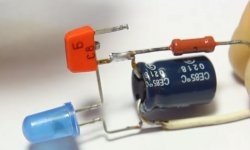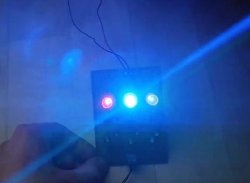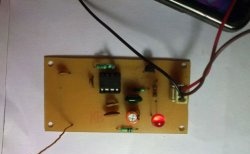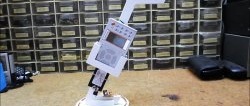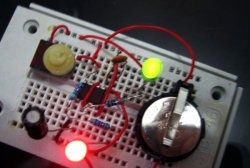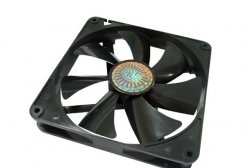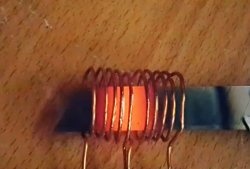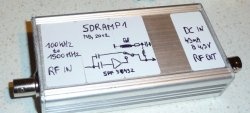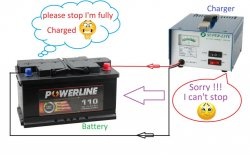Radio station diagram
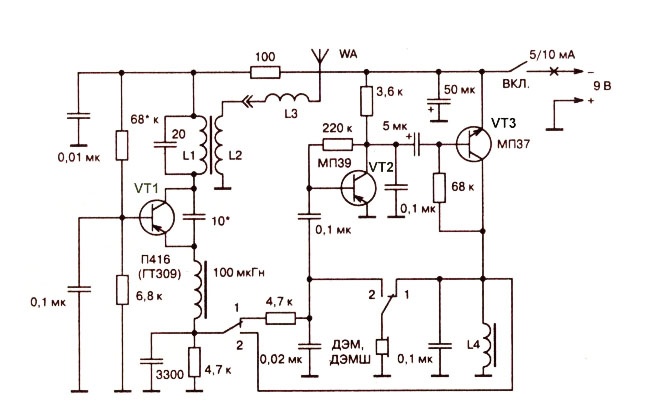
The scheme is simple, especially if you understand its operation. I suggest you immediately visually divide it into the left side with one transistor and the right side with two transistors. The transistor VT1 assembles a transmitter and a receiver at the same time. When the switch closes contacts “1”, the radio is in receive mode and this transistor operates in supergenerative detector mode. And when the contacts close to mode “2”, this is transmission and the transistor works as a master oscillator. With this, I think it’s clear.A simple low-frequency amplifier is assembled on transistor VT2, VT3, which, depending on the position of the switch, either amplifies the signal from the microphone and transmits it to the transmitter, or amplifies the signal from the supergenerative detector and transmits it to the loudspeaker. By the way, the loudspeaker and microphone are one and the same element - a high-impedance DEM telephone capsule.
Radio parts
Coil L1 is wound on a frame with a diameter of 8 mm with a ferrite core turn to turn and has 9 turns of PEL wire with a diameter of 0.5 mm. Coil L2 is wound on top of coil L1 and has 3 turns of the same wire. Coil L3 has a diameter of 5 mm and contains 60 turns of PEL wire with a diameter of 0.5 mm. The primary winding of the output transformer of the transistor receiver can be used as inductor L4.
Antenna design
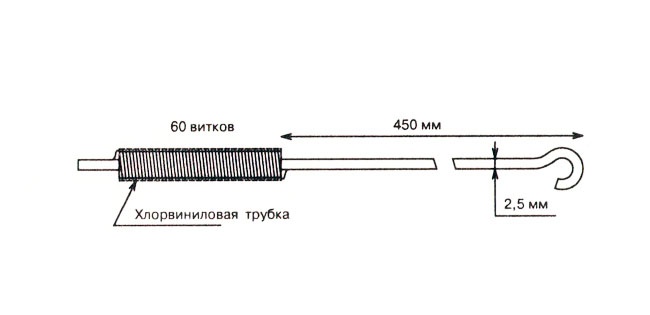
The antenna was made by me from thick aluminum wire, with a piece of insulation, on top of which the L3 coil was wound.
My modernization
I made such a walkie-talkie back in school, but then I already changed all the transistors to more modern ones with a high gain. For example, I replaced VT1, VT2 with KT361, and VT3 with KT315.
Now, of course, I would change the polarity of the power supply and the polarity of the capacitors, replace all the transistors from the n-p-n structure to p-n-p, and p-n-p to n-p-n. Well, I would install modern transistors. There are no particular requirements for transistors, so absolutely any will do.
The author of the diagram says that the range of action of radiums of the same type in open areas is 100-200 meters. I accelerated such radios to 500 meters, for this I used modern transistors, increased the antenna to 900 mm, plus increased the generator current by replacing the 100 Ohm resistor with a 50 Ohm one.Someone will say that it’s all due to the increase in the antenna, with which I disagree and will say that with the “native” antenna I was able to communicate over 300 meters.
Settings
If you assembled the radio correctly and from serviceable parts, then the entire setup will come down to setting the L1 coil to a frequency of 27 MHz. This can be done with a subline core or a capacitor in the circuit.
Lavrenko I. “Radio intercom” magazine “Radio Amateur”.

